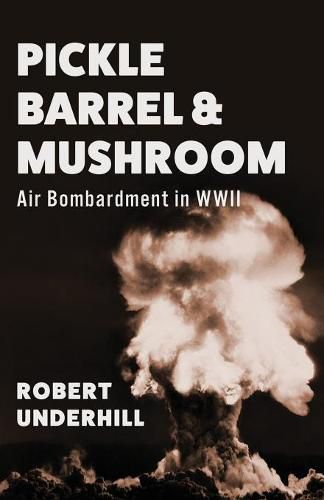Readings Newsletter
Become a Readings Member to make your shopping experience even easier.
Sign in or sign up for free!
You’re not far away from qualifying for FREE standard shipping within Australia
You’ve qualified for FREE standard shipping within Australia
The cart is loading…






This title is printed to order. This book may have been self-published. If so, we cannot guarantee the quality of the content. In the main most books will have gone through the editing process however some may not. We therefore suggest that you be aware of this before ordering this book. If in doubt check either the author or publisher’s details as we are unable to accept any returns unless they are faulty. Please contact us if you have any questions.
America entered WWII with minimal air power: few fighter planes and less than three dozen four-engine bombers. Yet the nation had unmatchable advantages with its enormous industrial capacity, men and women ready to meet every need, and scientists at work on atomic theories. Armed forces swelled, the most remarkable growth being in the Army Air Corps.
Allied strategists adopted a policy of winning the war in Europe before launching an all-out offensive against Japan. Heroic U.S. marine and navy fighters held Nipponese forces at bay until the beginning of 1945. By then, island after island was captured, and a 20th Air Force was established with B-29s–Superfortresses–able to make disastrous fire bombing raids on the Japanese homeland.
Scientists and associated engineers in America were able to construct an atomic bomb, and a successful test drop in New Mexico convinced the nation’s leaders that atomic bombs were feasible. Two such missiles subsequently dropped on Japanese targets brought WWII to its end in the late summer of 1945.
$9.00 standard shipping within Australia
FREE standard shipping within Australia for orders over $100.00
Express & International shipping calculated at checkout
This title is printed to order. This book may have been self-published. If so, we cannot guarantee the quality of the content. In the main most books will have gone through the editing process however some may not. We therefore suggest that you be aware of this before ordering this book. If in doubt check either the author or publisher’s details as we are unable to accept any returns unless they are faulty. Please contact us if you have any questions.
America entered WWII with minimal air power: few fighter planes and less than three dozen four-engine bombers. Yet the nation had unmatchable advantages with its enormous industrial capacity, men and women ready to meet every need, and scientists at work on atomic theories. Armed forces swelled, the most remarkable growth being in the Army Air Corps.
Allied strategists adopted a policy of winning the war in Europe before launching an all-out offensive against Japan. Heroic U.S. marine and navy fighters held Nipponese forces at bay until the beginning of 1945. By then, island after island was captured, and a 20th Air Force was established with B-29s–Superfortresses–able to make disastrous fire bombing raids on the Japanese homeland.
Scientists and associated engineers in America were able to construct an atomic bomb, and a successful test drop in New Mexico convinced the nation’s leaders that atomic bombs were feasible. Two such missiles subsequently dropped on Japanese targets brought WWII to its end in the late summer of 1945.